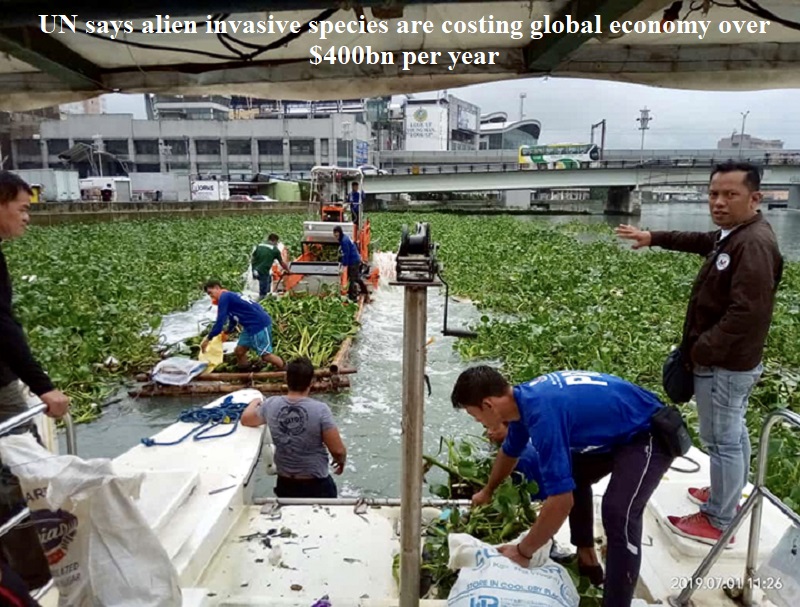
Invasive species are causing widespread disruption and ecological upheaval at an unprecedented rate, with economic losses exceeding $400 billion annually, according to a report released by the United Nations on Monday, September 4.
The report from the United Nations Intergovernmental Science-Policy Platform on Biodiversity and Ecosystem Services (IPBES) revealed that the economic damage caused by invasive species has quadrupled each decade since 1970.
In fact, these so-called “alien species” cost the world at least $423 billion in terms of damages and lost income annually. To provide context, this amount is equivalent to the GDP of countries like Denmark or Thailand, although scientists believe this estimate significantly underrepresents the true cost.
The findings stem from a comprehensive four-year assessment conducted by 86 researchers from 49 countries, which analyzed the global impact of around 3,500 harmful invasive species. These alien invaders played a role in 60 percent of recorded plant and animal extinctions.
Invasive species have caused chaos worldwide, such as water hyacinths choking water bodies, rats and snakes threatening bird populations in the Pacific, and non-native grasses fueling deadly wildfires in Hawaii. Additionally, invasive species like mosquitoes have brought diseases like Zika, yellow fever, and dengue to new regions.
The report highlighted over 37,000 alien species that have established themselves far from their native habitats. Approximately three-quarters of the negative impacts occur on land, particularly in forests, woodlands, and farmlands.
Invasive species are organisms, often transported by human activity, that can take root and harm an ecosystem. These effects may be slow to manifest but can be catastrophic.
Scientists warn that this problem will intensify with rising global temperatures due to climate change, which will expand the habitats of invasive species. Economic expansion, population growth, and climate change all contribute to the increasing frequency and extent of biological invasions.
Human activities are largely responsible for the spread of non-native species, whether accidentally through activities like ballast water discharge from cargo ships or intentionally by individuals. This proliferation of invasive species reflects the rapid expansion of human activity, marking the Anthropocene epoch.
Invasive alien species pose a major threat to biodiversity, causing irreversible damage to nature, local and global species extinctions, and threats to human well-being. The impacts of invasive species are not restricted to a specific region, affecting people from diverse backgrounds and communities worldwide.
The report emphasized that prevention is crucial, with only 17 percent of countries having measures, laws, or regulations to manage invasive species. Prevention through border biosecurity and import controls is the most effective strategy, according to the scientists.
Efforts are being made to combat this issue and protect biodiversity, including commitments from 190 countries to place 30 percent of land and water under protection by 2030, as outlined in the Kunming-Montreal Global Biodiversity Framework. This framework also aims to reduce the rate of invasive alien species spread by half by 2030.

Post Your Comments